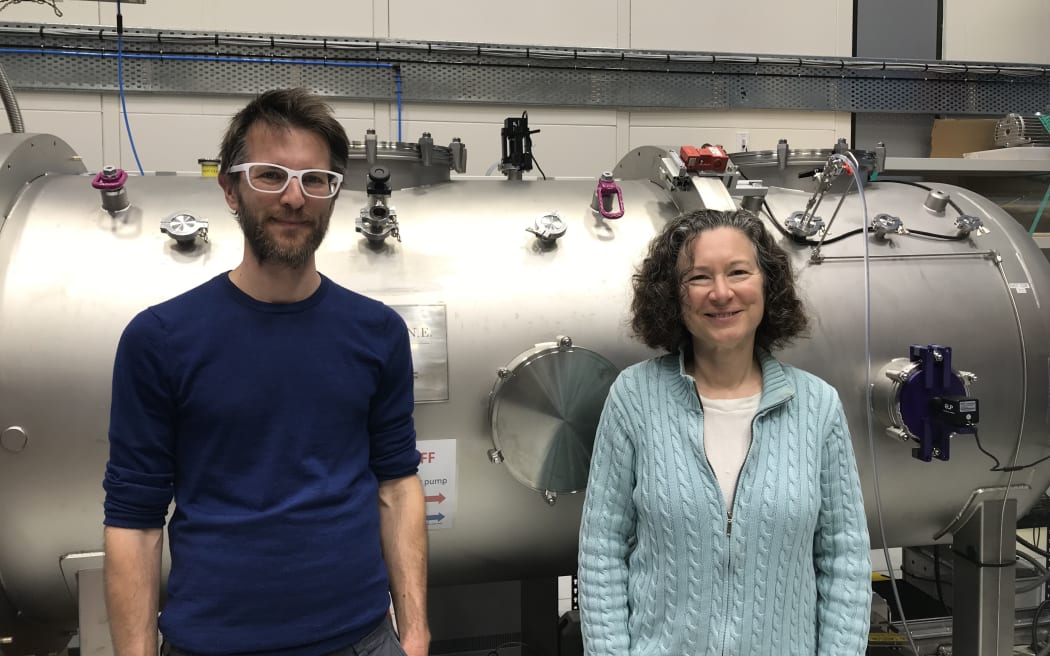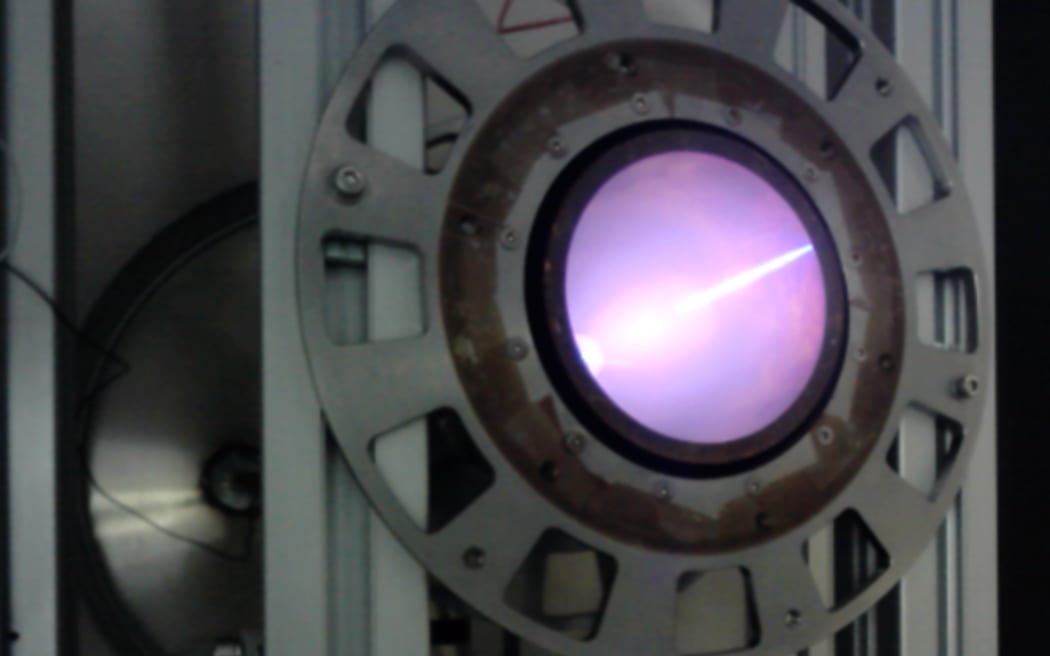The Paihau – Robinson Research Institute are taking their first foray into space. They are looking to test a brand-new superconducting magnet and flux pump design to see if it can make plasma rockets more efficient.

Dr Ben Mallett and Betina Pavri at Robinson Research Institute. Photo: Claire Concannon / RNZ
Follow Our Changing World on Apple Podcasts, Spotify, Stitcher, iHeartRADIO, Google Podcasts, RadioPublic or wherever you listen to your podcasts
Actually, the full and correct name is ‘applied-field magneto plasma dynamic thrusters’. These kinds of rockets don’t produce a huge amount of force – for some, the thrust they produce is equal to the weight of a piece of paper on your hand. However, they are extremely efficient. In the frictionless vacuum of space, over time, they can help spacecrafts build up great speeds and travel long distances.
Plasma is charged gas, and in these kinds of electric space thruster, electromagnets are used to direct the plasma so that it fires out the back and pushes the rocket forward. But the weight and power requirements of current magnets used in these thrusters is a barrier.

The radiant glow given off by the plasma of ionized argon gas in the thruster being built at Paihau – Robinson Research Institute. Photo: Jakub Glowacki
Enter Paihau – Robinson, known for their work with high-temperature superconducting magnets. Superconducting materials conduct electrical current with no resistance, so they can create very powerful electro-magnets when a current is passed through them. They do come with baggage though – a cryocooler to keep the magnet at -200oC and a flux pump to send current through the magnet to power it up.
All of these parts need to be carefully designed and then tested to see if they can withstand the rigours of space.
To learn more:
-
Listen to the full episode on Our Changing World.


